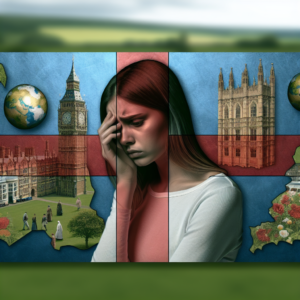Title: Behind Closed Doors: Unmasking Domestic Violence and Its Long-Term Effects
Introduction:
Domestic violence is a widespread issue that affects millions of individuals around the world, regardless of their gender, age, or socioeconomic status. Behind closed doors, victims silently suffer physical, emotional, and psychological abuse, enduring the consequences of this heinous crime for years to come. This article seeks to shed light on the realities of domestic violence, unveil its long-term effects, and raise awareness about this pressing social problem that often remains hidden from public view.
Understanding Domestic Violence:
Domestic violence refers to the pattern of abusive behavior used by one person to gain power and control over another individual within a relationship. It can take various forms such as physical, sexual, emotional, verbal, financial, or psychological abuse. The victims can be spouses, intimate partners, children, or any person living within a household where abusive behavior occurs.
Behind Closed Doors:
Domestic violence tends to occur behind closed doors, making it challenging to identify and help victims. Many victims suffer in silence, fearing further repercussions or societal judgment. The concept of a picture-perfect home becomes a façade, hiding the cycles of abuse that victims endure daily.
Long-Term Effects of Domestic Violence:
1. Physical Health Consequences: Victims of domestic violence often face severe physical health issues such as bruises, broken bones, chronic pain, and sexual health problems. The physical trauma can have lasting effects on their overall well-being and may require long-term medical attention.
2. Psychological and Emotional Trauma: The emotional and psychological scars inflicted by domestic violence are profound and often long-lasting. Victims may experience depression, anxiety, post-traumatic stress disorder (PTSD), and have difficulties trusting others. Emotional trauma may interfere with their ability to form healthy relationships in the future.
3. Socioeconomic Disadvantages: Domestic violence disproportionately affects individuals from lower socioeconomic backgrounds, exacerbating existing financial vulnerabilities. Victims may face financial abuse, loss of employment, and challenges in finding stable housing, which can lead to a cycle of dependence and further abuse.
4. Impact on Children: Witnessing domestic violence can have detrimental effects on children, leading to emotional and behavioral problems, academic difficulties, and an increased risk of perpetuating violence in their future relationships.
5. Intergenerational Transmission: Domestic violence often perpetuates across generations, as children who grow up in abusive households may become victims or abusers themselves in their adult lives, perpetuating the cycle of violence.
Challenging the Stigma and Raising Awareness:
To combat domestic violence effectively, we must address its root causes and societal attitudes toward this issue. Raising awareness, challenging the stigma, and promoting healthy relationships through education are crucial steps in breaking the cycle of violence.
FAQs (Frequently Asked Questions):
1. How can I recognize the signs of domestic violence?
Signs of domestic violence may include physical injuries, unexplained absences or changes in behavior, isolation from friends and family, frequent fearfulness or anxiety, and controlling actions by one partner over the other.
2. What should I do if I suspect someone is a victim of domestic violence?
If you suspect someone is a victim of domestic violence, it is important to approach them with empathy and without judgment. Encourage them to seek help from support services such as helplines, shelters, or counseling centers. Offer your support and remind them that they are not alone.
3. Can domestic violence affect anyone?
Yes, domestic violence can affect individuals from all walks of life, regardless of their gender, age, or socioeconomic status. It is essential to understand that anyone can be a victim or a perpetrator of domestic violence.
4. How can we break the cycle of domestic violence?
Breaking the cycle of domestic violence requires collective efforts. Education, awareness programs, and legislation that support survivors, as well as holding perpetrators accountable, are crucial steps. Additionally, fostering a society that promotes healthy relationships based on mutual respect, consent, and gender equality is vital.
Conclusion:
Domestic violence is a grave social problem that demands immediate attention. By unmasking the hidden realities behind closed doors and shedding light on its long-term effects, we can work towards eradicating this pervasive issue. Society must come together to challenge the stigma surrounding domestic violence, provide support to survivors, and promote healthy relationships to build a safer future for all.
















